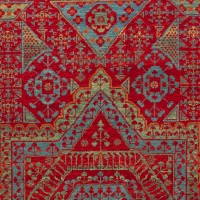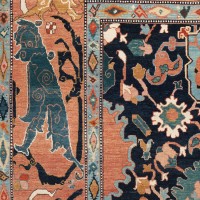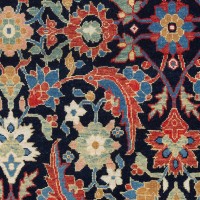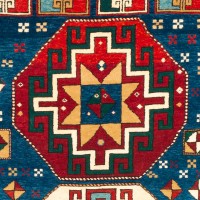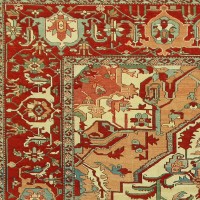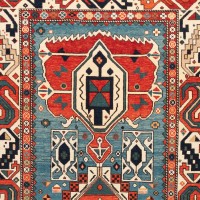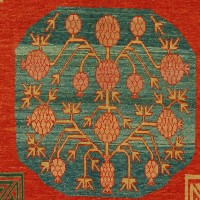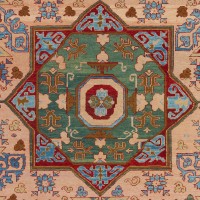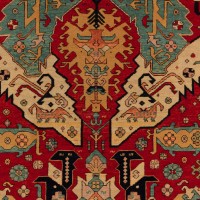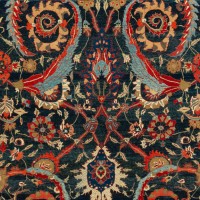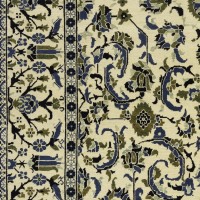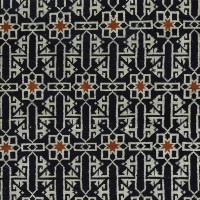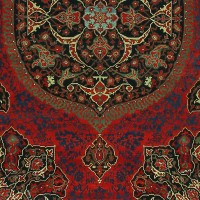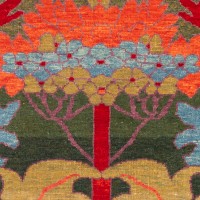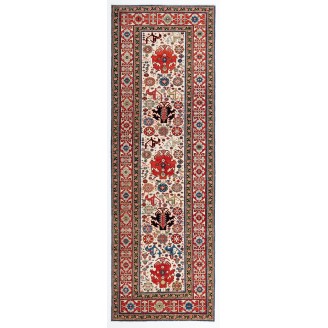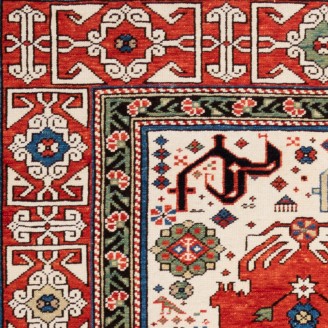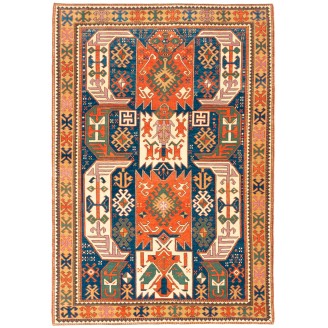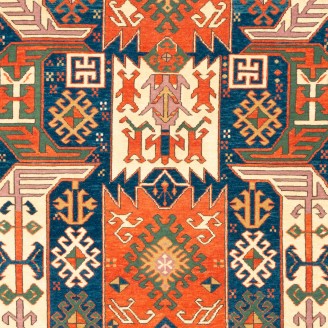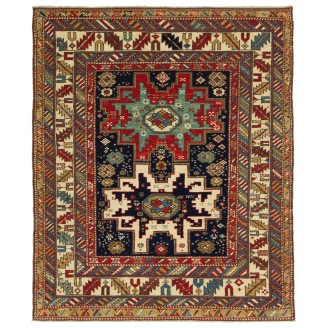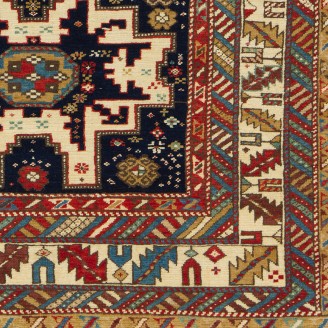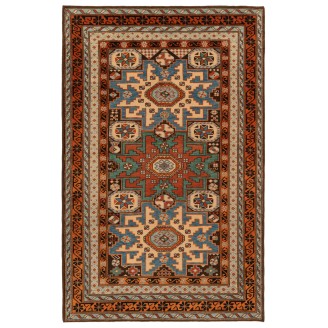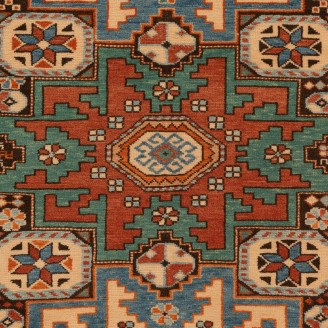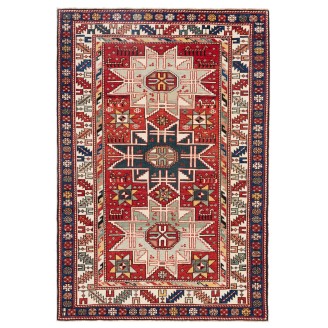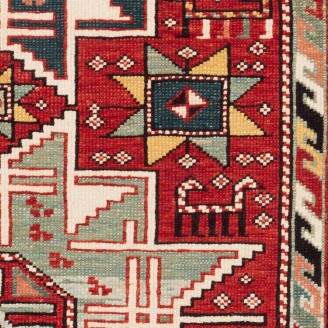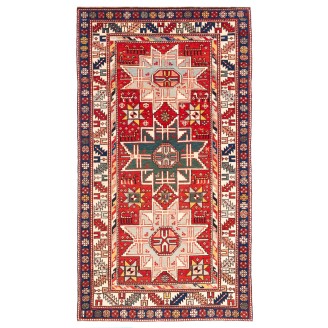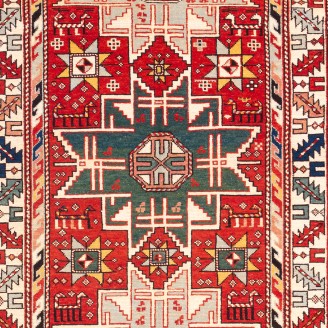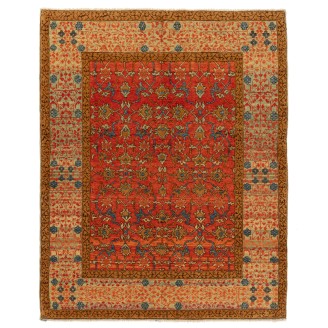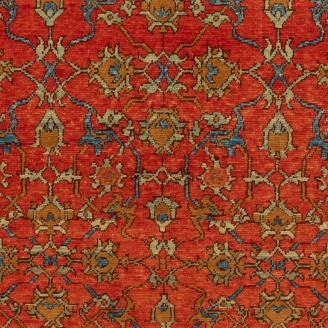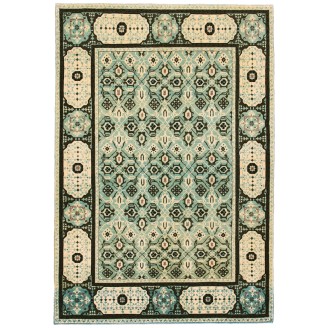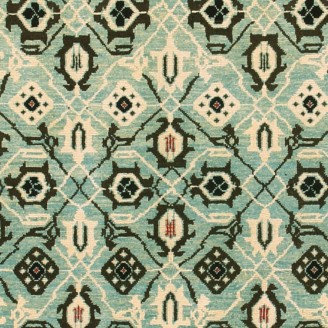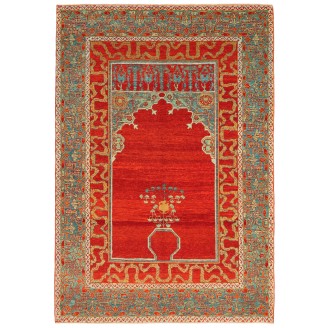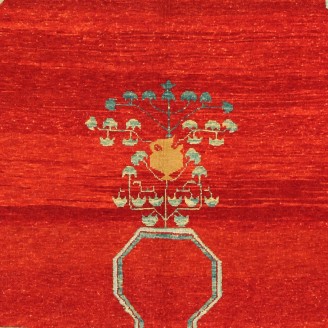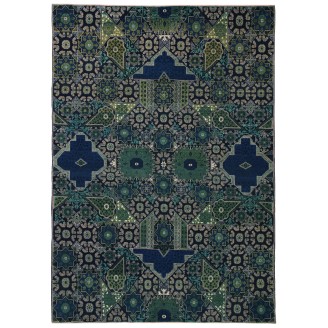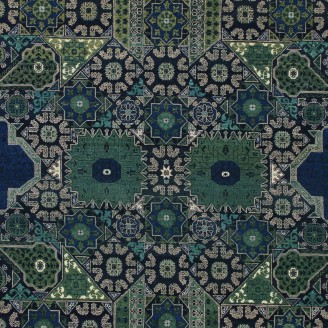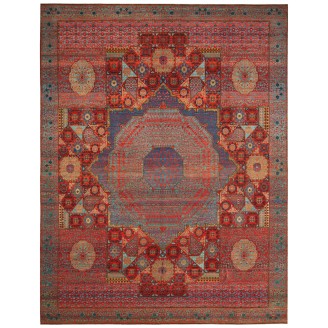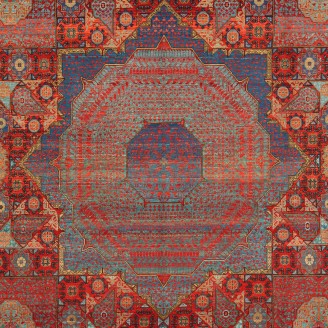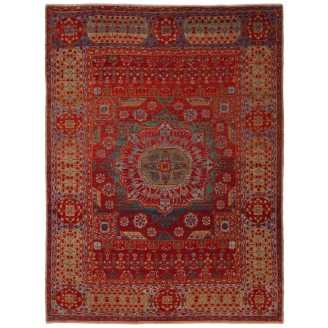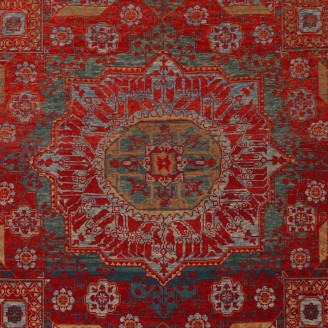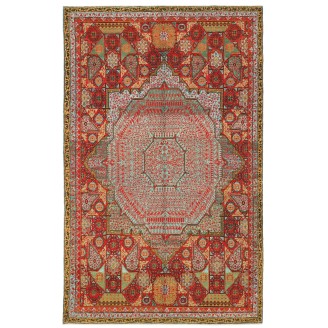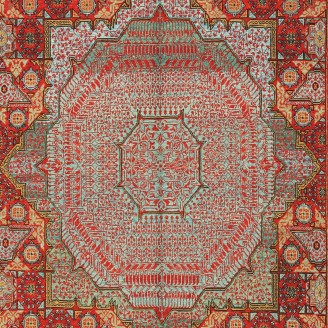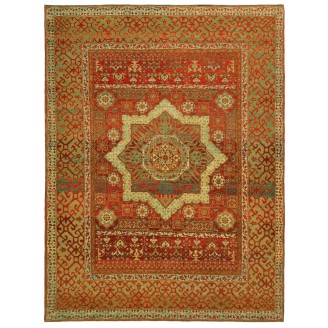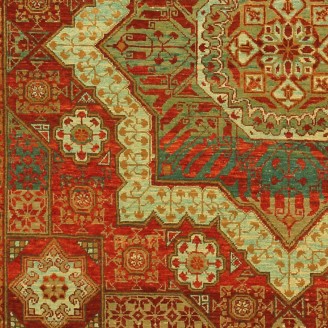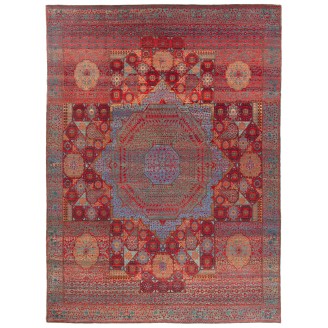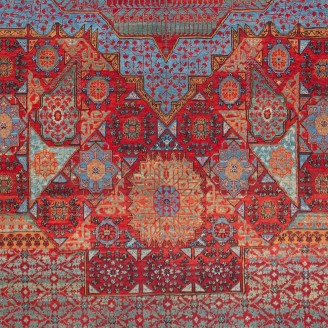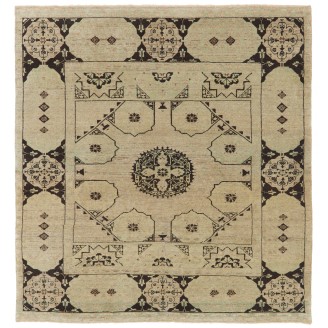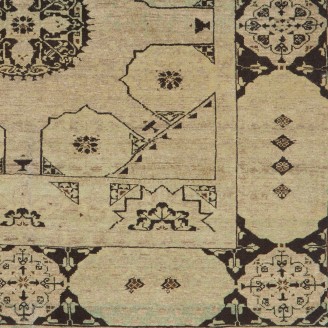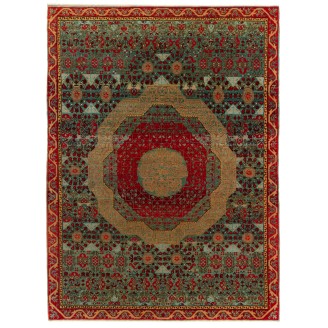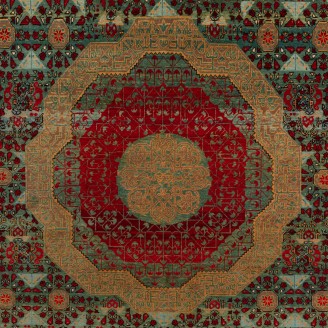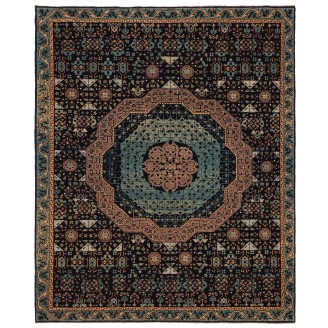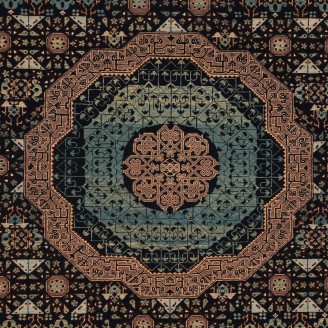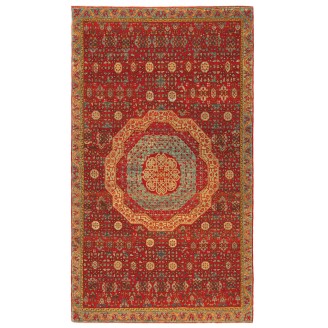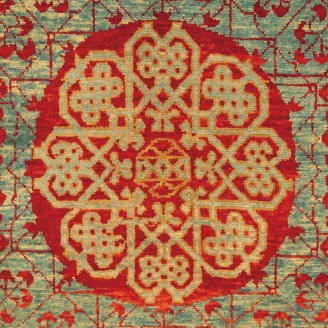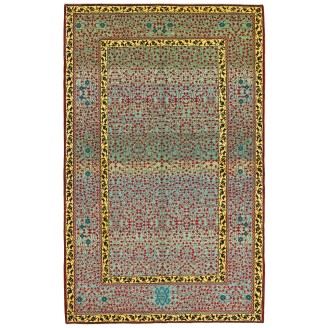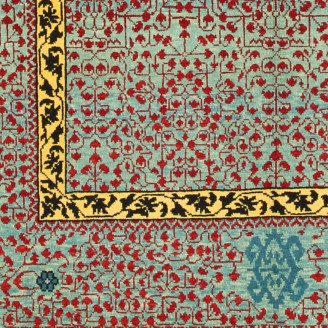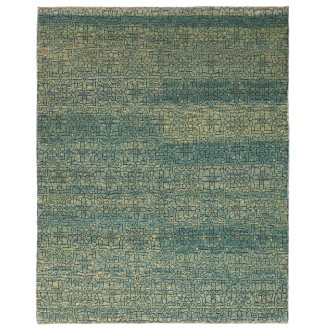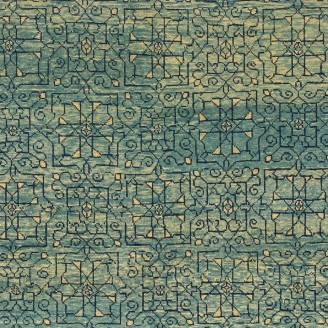Model: ARTK0025
Dimensions: 3'2" X 9'8"(99cm x 297cm)
The source of the rug comes from the book Oriental Rugs Volume 1 Caucasian, Ian Bennett, Oriental Textile Press, Aberdeen 1993, pg.247. This is a Harshang design rug with palmettes from the early 19th century, Kuba region, Caucasus area. This is a stylized version of the Caucasian 'split-palmettes' ..
Price:
$0
Ex Tax:$0
Model: ART00400
Dimensions: 4'11" X 7'1"(151cm x 216cm)
The source of the rug comes from the book Tapis du Caucase - Rugs of the Caucasus, Ian Bennett & Aziz Bassoul, The Nicholas Sursock Museum, Beirut, Lebanon 2003, nr.52 and Orient Star - A Carpet Collection, E. Heinrich Kirchheim, Hali Publications Ltd, 1993 nr.8. This is a highly stylized "sickle-le..
Price:
$3,700
Ex Tax:$3,700
Model: ART00447
Dimensions: 3'10" X 4'7"(118cm x 141cm)
The source of the rug comes from the book Tapis du Caucase - Rugs of the Caucasus, Ian Bennett & Aziz Bassoul, The Nicholas Sursock Museum, Beirut, Lebanon 2003, nr.91 and Oriental Rugs Volume 1 Caucasian, Ian Bennett, Oriental Textile Press, Aberdeen 1993, pg.326 and Caucasian Carpets, E. Gans-Reud..
Price:
$3,000
Ex Tax:$3,000
Model: ART00407
Dimensions: 4'1" X 6'3"(125cm x 192cm)
The source of the rug comes from the book Tapis du Caucase - Rugs of the Caucasus, Ian Bennett & Aziz Bassoul, The Nicholas Sursock Museum, Beirut, Lebanon 2003, nr.91 and Oriental Rugs Volume 1 Caucasian, Ian Bennett, Oriental Textile Press, Aberdeen 1993, pg.326 and Caucasian Carpets, E. Gans-..
Price:
$2,700
Ex Tax:$2,700
Model: ARTK0027
Dimensions: 2'11" X 5'6"(91cm x 168cm)
The source of the rug comes from the book Orient Star - A Carpet Collection, E. Heinrich Kirchheim, Hali Publications Ltd, 1993 nr.30 and Oriental Rugs Volume 1 Caucasian, Ian Bennett, Oriental Textile Press, Aberdeen 1993, pg.326. This is a large stellar medallion as "Lesghi stars" rug from the 19t..
Price:
$0
Ex Tax:$0
Model: ART00030
Dimensions: 3'1" X 5'6"(94cm x 168cm)
The source of the rug comes from the book Orient Star - A Carpet Collection, E. Heinrich Kirchheim, Hali Publications Ltd, 1993 nr.30 and Oriental Rugs Volume 1 Caucasian, Ian Bennett, Oriental Textile Press, Aberdeen 1993, pg.326. This is a large stellar medallion as "Lesghi stars" rug from the 19t..
Price:
$3,950
Ex Tax:$3,950
Model: ART00283
Dimensions: 4'1" X 5'1"(126cm x 155cm)
The source of the carpet comes from the Mercer Collection Sotheby's 2000 (catalog cover). This Mamluk-Cairene carpet is known, curiously featuring some type of lattice was designed in the early 16th-century rug by Mamluk Sultane of Cairo, Egypt. This piece from the Bavarian National Museum in Munich..
Price:
$5,300
Ex Tax:$5,300
Model: ART00253
Dimensions: 5'1" X 7'3"(155cm x 223cm)
The source of the carpet comes from the Mercer Collection Sotheby's 2000 (catalog cover). This Mamluk-Cairene carpet is known, curiously featuring some type of lattice was designed in the early 16th-century rug by Mamluk Sultane of Cairo, Egypt. This piece from the Bavarian National Museum in Munich..
Price:
$5,900
Ex Tax:$5,900
Model: ART00147
Dimensions: 4'8" X 6'9"(143cm x 207cm)
The source of the rug comes from the Museum of Islamic Art at the Pergamon Museum, Berlin, Germany. This prayer rug with cloudbands was designed in the early 16th-century rug by Mamluk Sultane of Cairo, Egypt. This carpet demonstrates through its design that it belongs to the group of prayer rugs. T..
Price:
$5,100
Ex Tax:$5,100
Model: ART00141
Dimensions: 7'3" X 10'4"(222cm x 317cm)
The source of the rug comes from the book Völker, Angela, Die orientalischen Knüpfteppiche das MAK, Vienna: Böhlau, 2001: 42–5. This rug with the central star was designed in the early 16th-century rug by Mamluk Sultane of Cairo, Egypt. It is exhibited at MAK – Museum of Applied Arts, Vienna Austria..
Price:
$0
Ex Tax:$0
Model: ART00038
Dimensions: 8'11" X 11'7"(273cm x 355cm)
The source of the rug comes from the book Völker, Angela, Die orientalischen Knüpfteppiche das MAK, Vienna: Böhlau, 2001: 42–5. This rug with the central star was designed in the early 16th-century rug by Mamluk Sultane of Cairo, Egypt. It is exhibited at MAK – Museum of Applied Arts, Vienna Austria..
Price:
$28,500
Ex Tax:$28,500
Model: ART00056
Dimensions: 5'6" X 7'3"(169cm x 222cm)
The source of the rug comes from the book Renaissance of Islam, Art of the Mamluks, Esin Atil, Smithsonian Institution Press, Washington D.C., 1981 nr.127. This rug with the central star was designed in the early 16th-century rug by Mamluk Sultane of Cairo, Egypt. It is exhibited at the Washington D..
Price:
$7,400
Ex Tax:$7,400
Model: ART00051
Dimensions: 4'6" X 7'4"(139cm x 225cm)
The source of the rug comes from the book Völker, Angela, Die orientalischen Knüpfteppiche das MAK, Vienna: Böhlau, 2001: 42–5. This rug with the central star was designed in the early 16th-century rug by Mamluk Sultane of Cairo, Egypt. It is exhibited at MAK – Museum of Applied Arts, Vienna Austria..
Price:
$6,500
Ex Tax:$6,500
Model: ART00226
Dimensions: 5'10" X 7'10"(180cm x 240cm)
The source of the rug comes from the possession of Endre Unger, which was sold at Sotheby's in 1992. This rug with the central star was designed in the early 16th-century rug by Mamluk Sultane of Cairo, Egypt. It is one of the most immaculate Mamluk carpets, and the medallion stands uncluttered on a..
Price:
$0
Ex Tax:$0
Model: ART00036
Dimensions: 8'11" X 12'0"(273cm x 368cm)
The source of the rug comes from the book Völker, Angela, Die orientalischen Knüpfteppiche das MAK, Vienna: Böhlau, 2001: 42–5. This rug with the central star was designed in the early 16th-century rug by Mamluk Sultane of Cairo, Egypt. It is exhibited at MAK – Museum of Applied Arts, Vienna Austria..
Price:
$28,500
Ex Tax:$28,500
Model: ART00332
Dimensions: 4'10" X 5'1"(148cm x 157cm)
The source of the rug comes from the book Renaissance of Islam, Art of the Mamluks, Esin Atil, Smithsonian Institution Press, Washington D.C., 1981 nr.125. This a rug with a cup motif design, a late 15th-century rug from Mamluk Sultane of Cairo, Egypt. It is exhibited at the Washington D.C. The..
Price:
$4,030
Ex Tax:$4,030
Model: ART00338
Dimensions: 4'11" X 6'9"(152cm x 206cm)
The design source of the rug comes from The C. L. David Collection, Copenhagen. This rug with the Cusped Medallion was designed in the early 16th-century rug by Mamluk Sultane of Cairo, Egypt. Once in the Hirth Collection, and later with Ulrich Schürmann in 1965, this piece now belongs to the David ..
Price:
$5,400
Ex Tax:$5,400
Model: ART00378
Dimensions: 5'1" X 6'1"(156cm x 187cm)
The design source of the rug comes from The C. L. David Collection, Copenhagen. This rug with the Cusped Medallion was designed in the early 16th-century rug by Mamluk Sultane of Cairo, Egypt. Once in the Hirth Collection, and later with Ulrich Schürmann in 1965, this piece now belongs to the David ..
Price:
$5,300
Ex Tax:$5,300
Model: ART00146
Dimensions: 5'0" X 8'9"(154cm x 267cm)
The design source of the rug comes from The C. L. David Collection, Copenhagen. This rug with the Cusped Medallion was designed in the early 16th-century rug by Mamluk Sultane of Cairo, Egypt. Once in the Hirth Collection, and later with Ulrich Schürmann in 1965, this piece now belongs to the David ..
Price:
$7,100
Ex Tax:$7,100
Model: ART00057
Dimensions: 4'4" X 6'11"(133cm x 212cm)
The source of the rug comes from the book Völker, Angela, Die orientalischen Knüpfteppiche das MAK, Vienna: Böhlau, 2001: 42–5. This rug with the central star was designed in the early 16th-century rug by Mamluk Sultane of Cairo, Egypt. It is exhibited at MAK – Museum of Applied Arts, Vienna Austria..
Price:
$5,800
Ex Tax:$5,800
Model: ART00279
Dimensions: 4'9" X 5'11"(145cm x 182cm)
The source of the rug comes from the possession of Endre Unger, which was sold at Sotheby’s in 1992. That rug with the central star was designed in the early 16th-century rug by Mamluk Sultane of Cairo, Egypt. The interpreted design is composed of Jerrehian rug's border motifs lattice, covering the ..
Price:
$4,500
Ex Tax:$4,500
